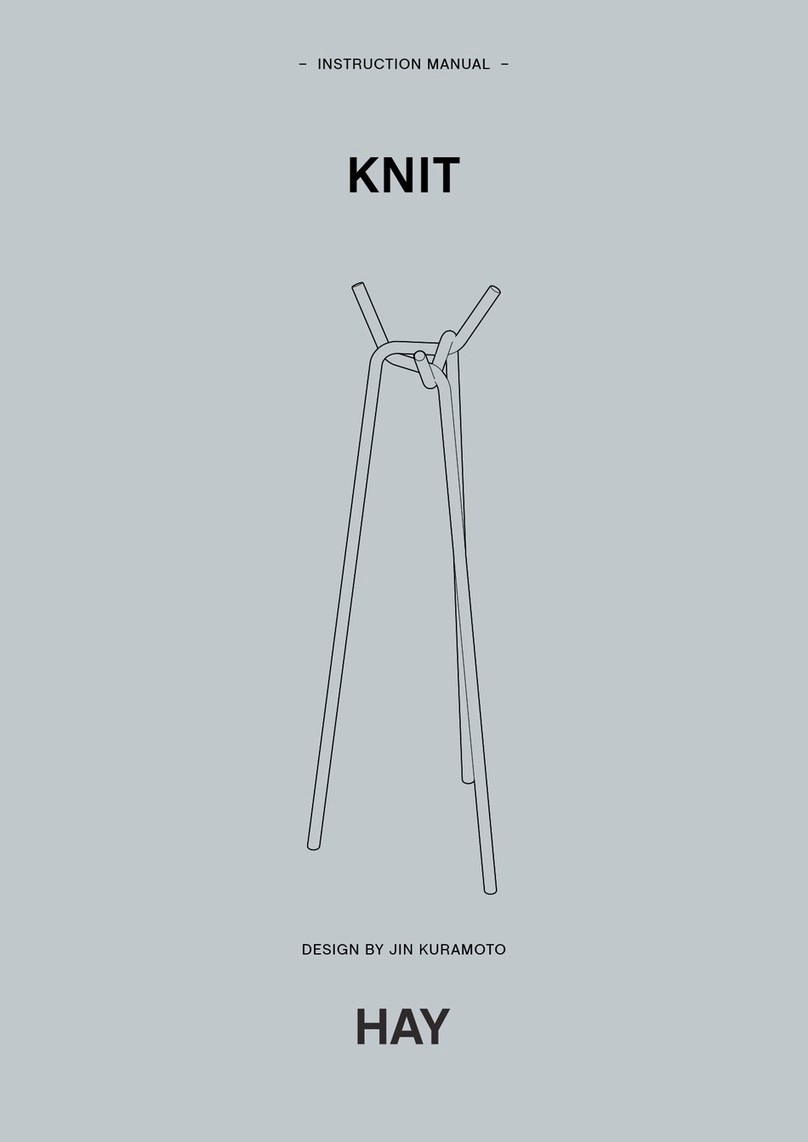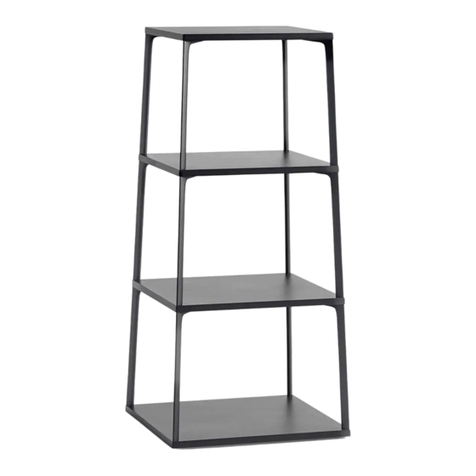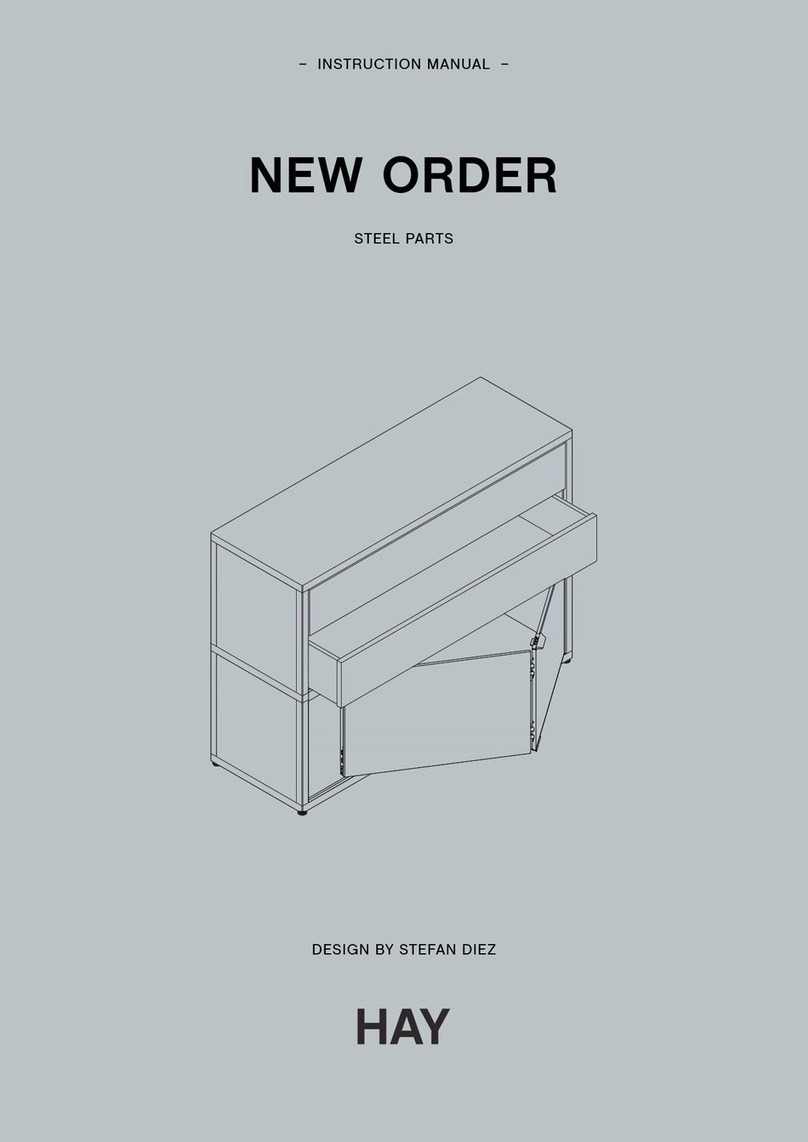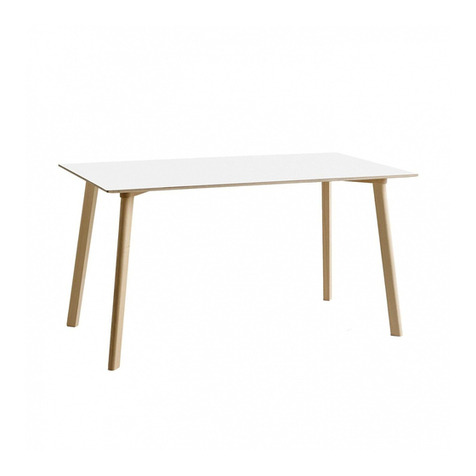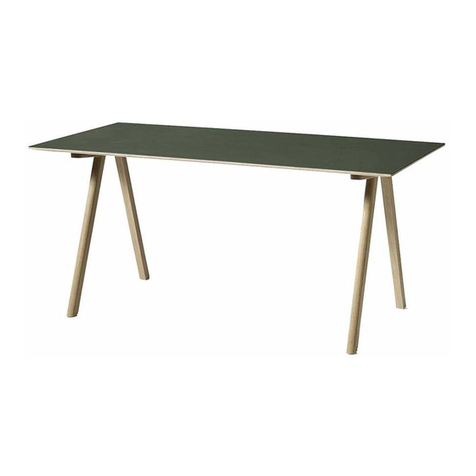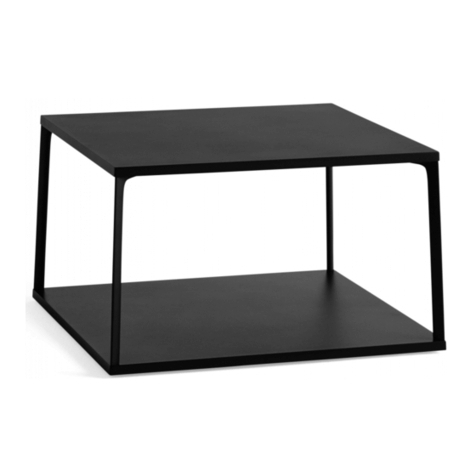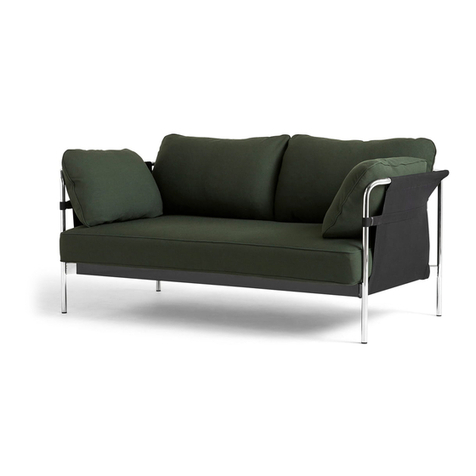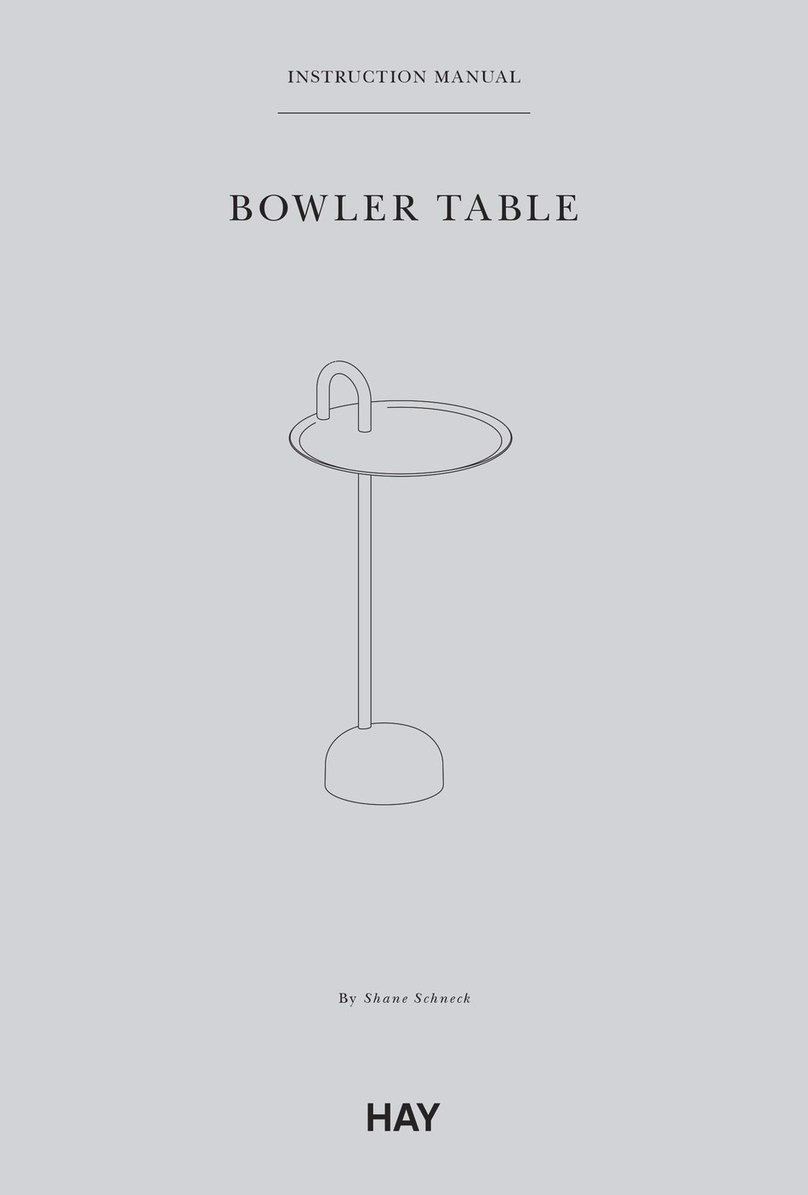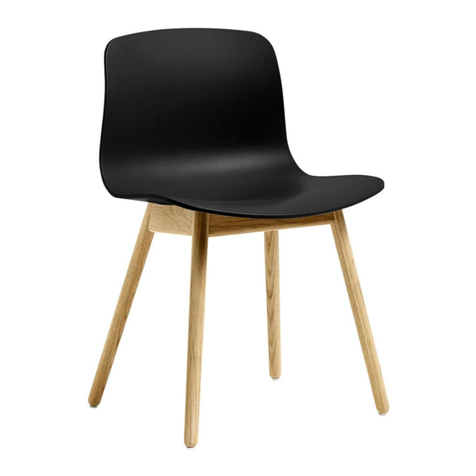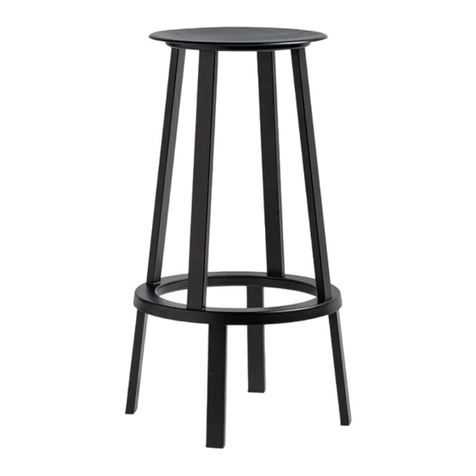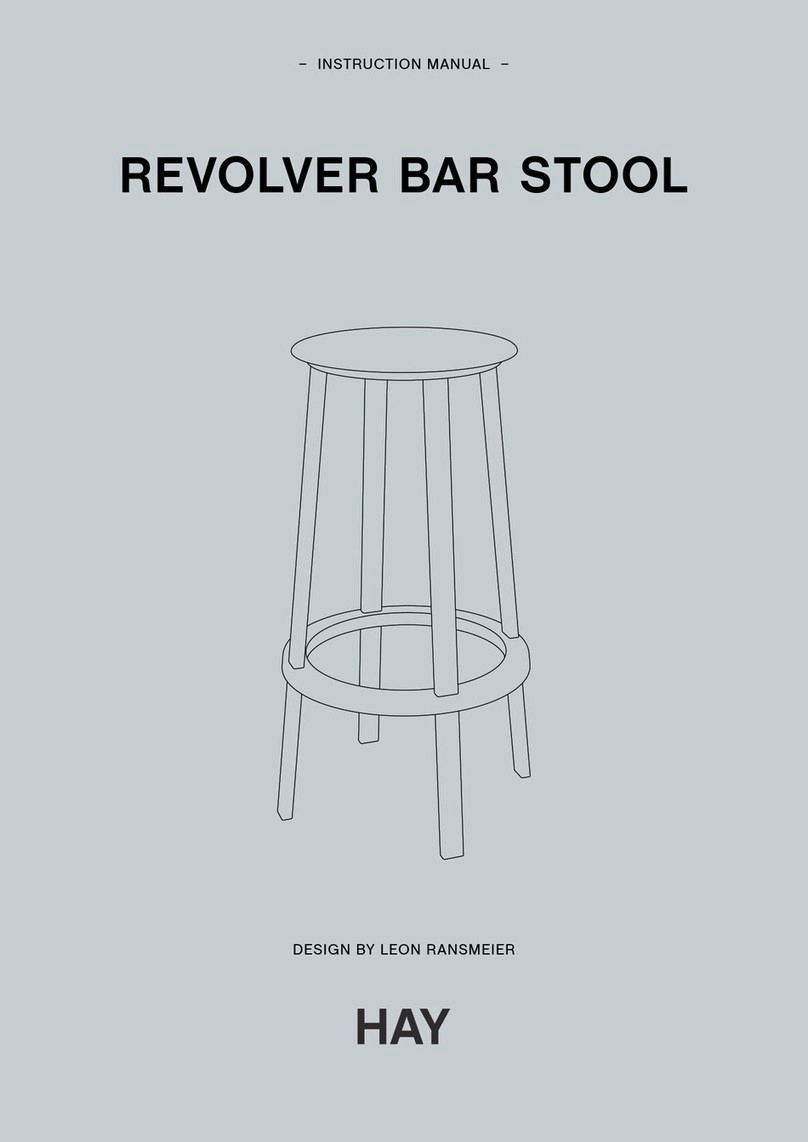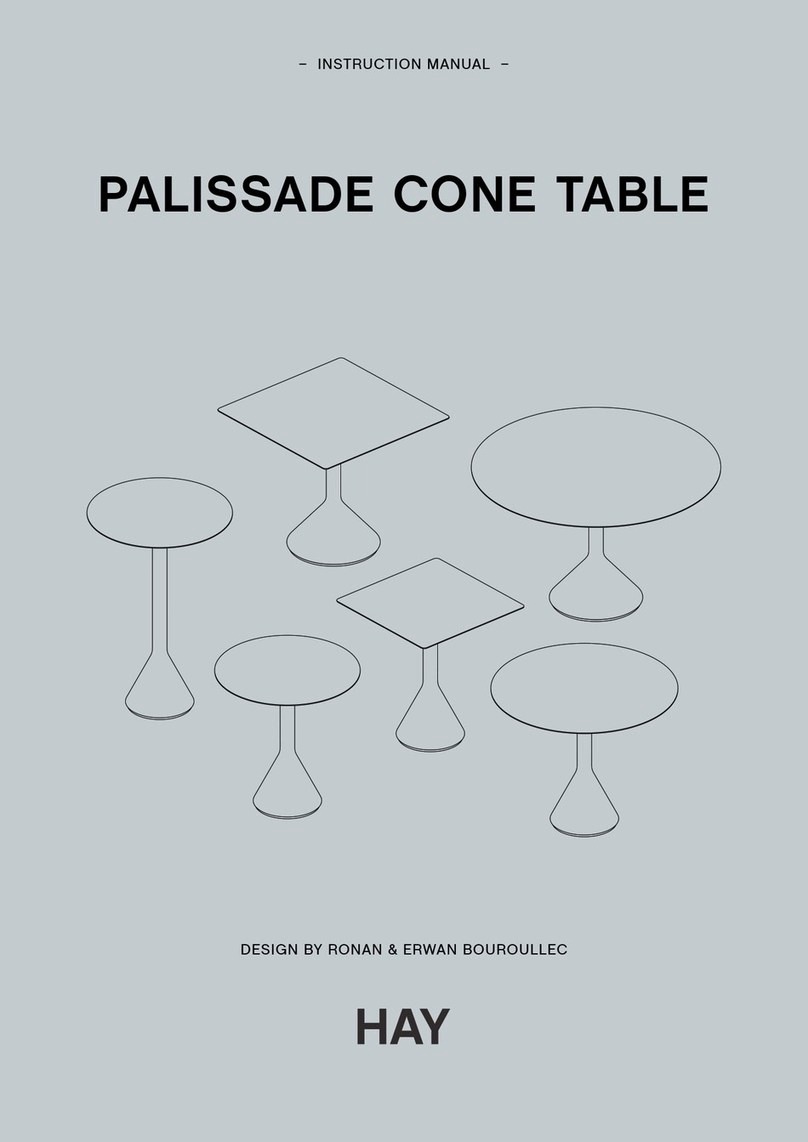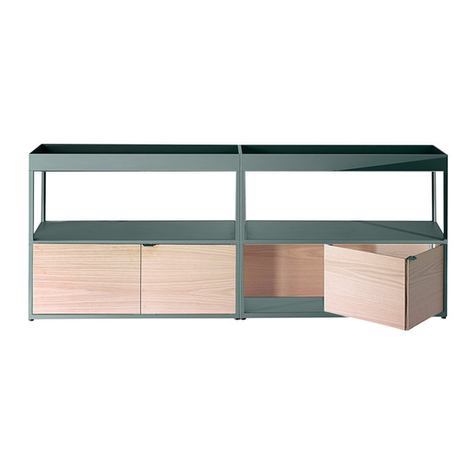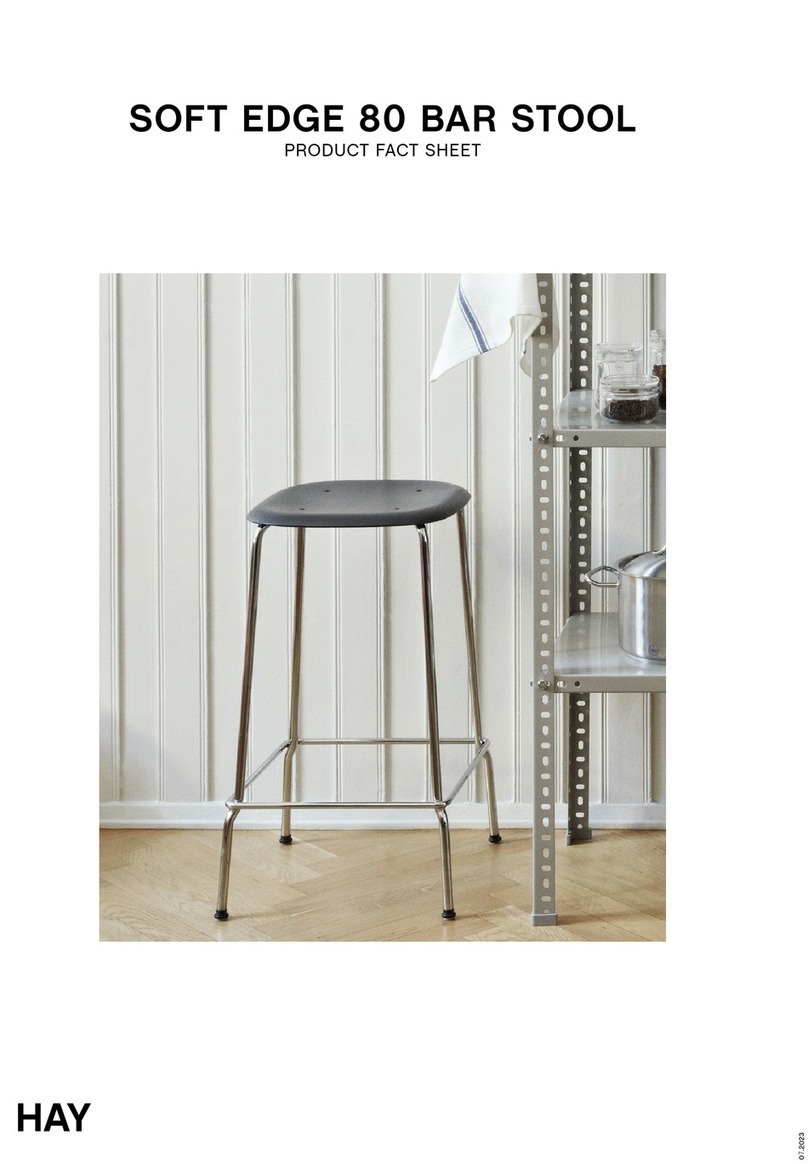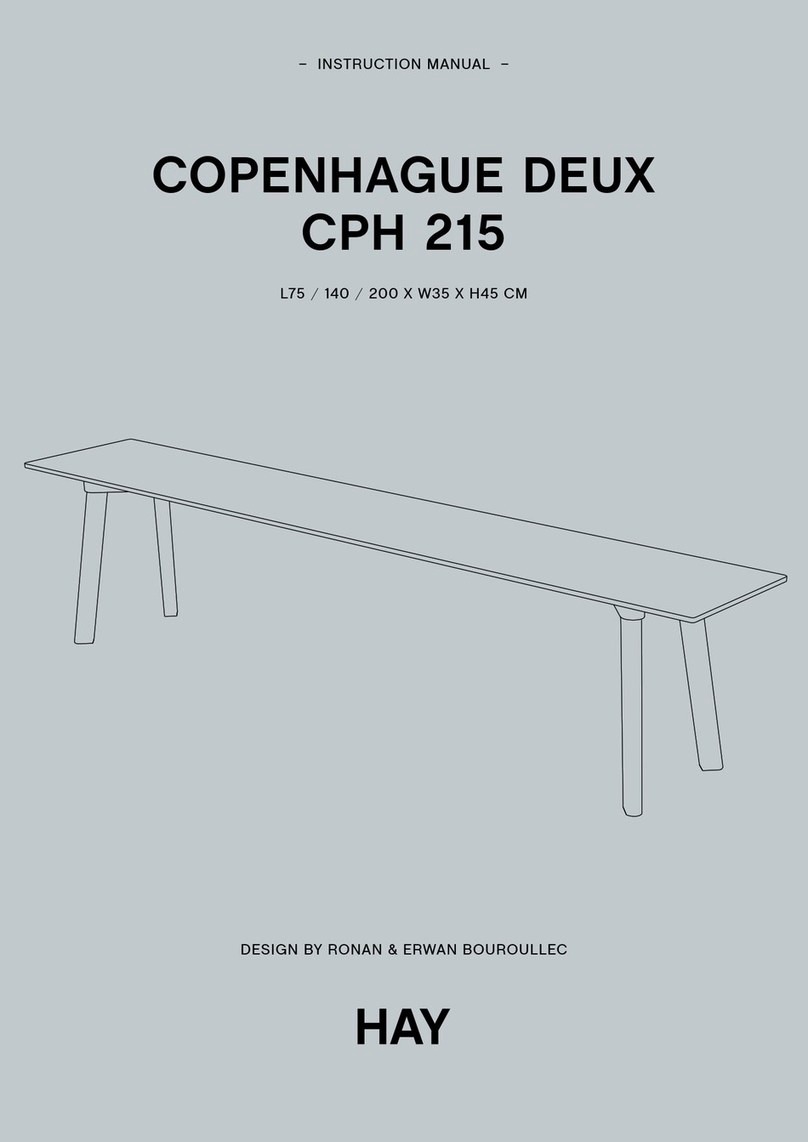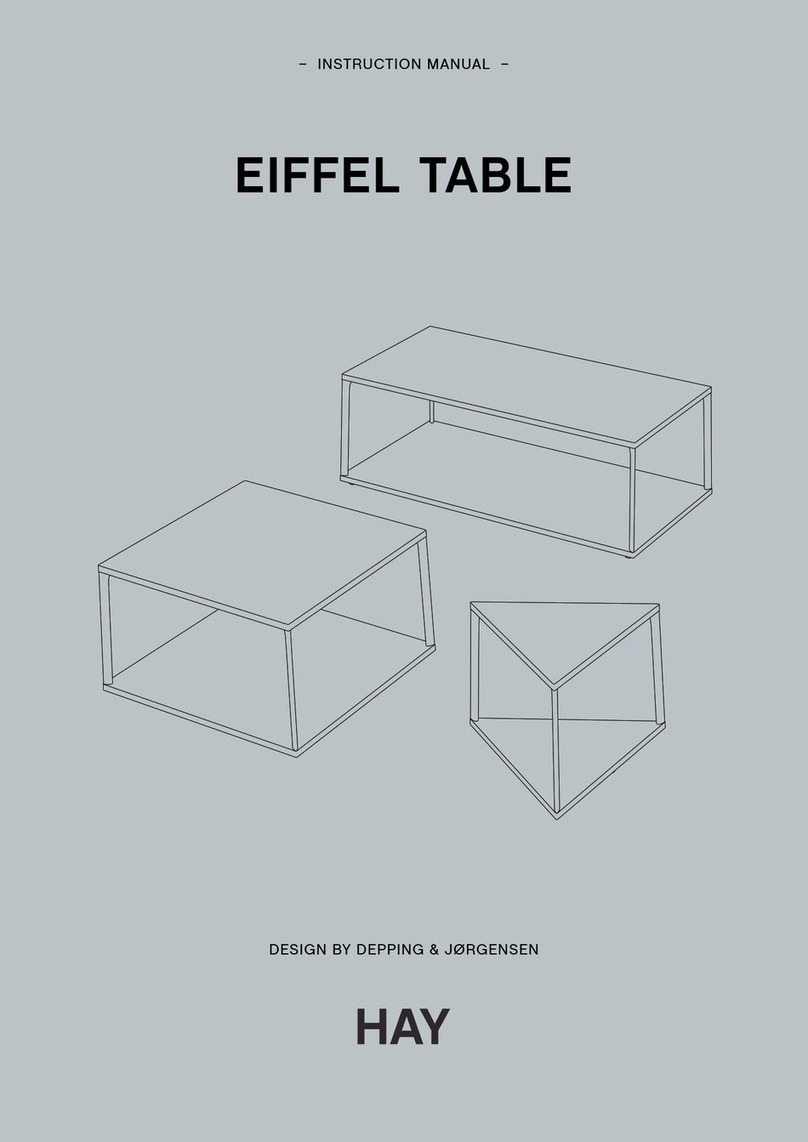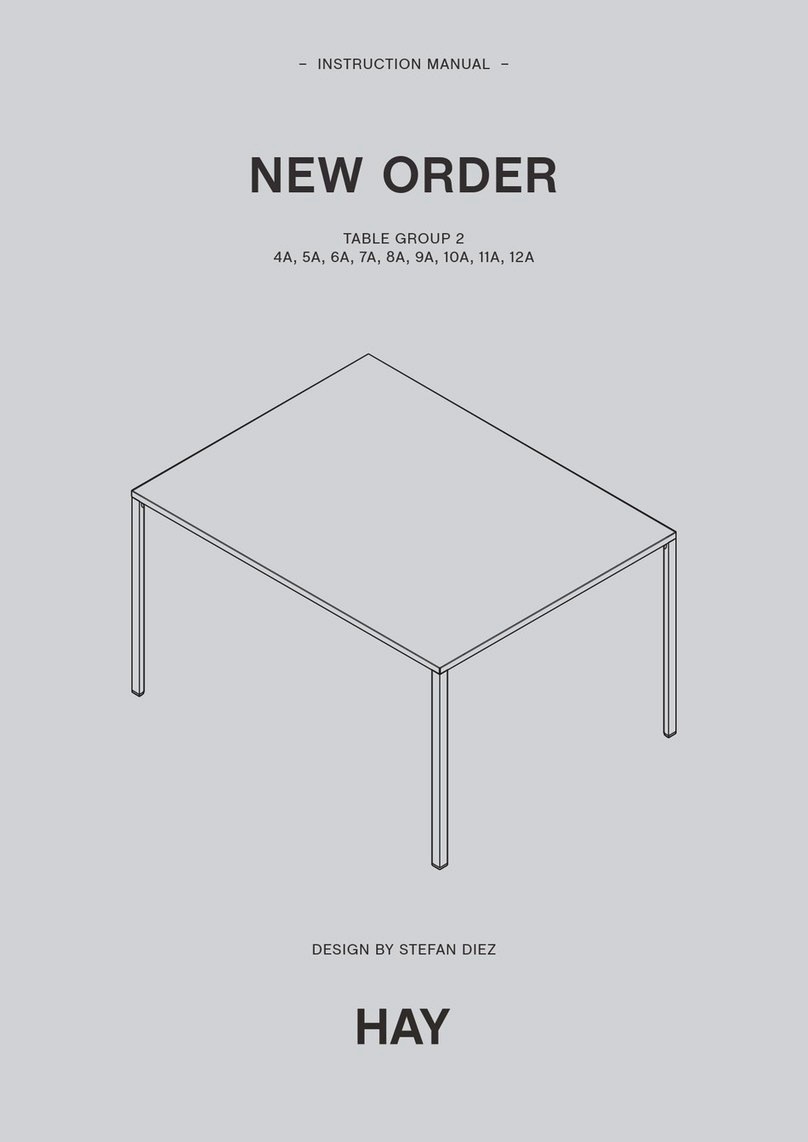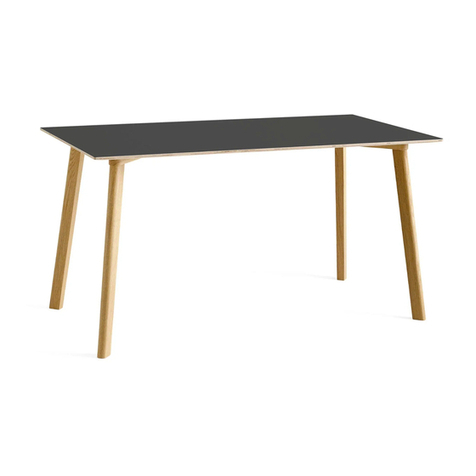LACQUERED OR STAINED WOOD
• Wipe with a clean cloth wrung in water or in a
solution of water and a neutral detergent. Remove
soap residue immediately using a clean, dry cloth.
• If the surface is scratched or appears matt, use
a care product especially suited to lacquered or
stained wood.
• Avoid using detergents containing silicone, as
they seal the stain in and make subsequent repairs
more difficult.
• Avoid using scouring cream or scouring pads,
as they may scratch the surface.
OILED WOOD
• Wipe with a clean, dry cloth. If the surface is dirty,
wipe with a clean cloth wrung in water or in a solu-
tion of water and a neutral detergent or soap flakes.
Remove any soap residue immediately using a clean,
dry cloth.
• Never use soft soap or solvents such as spirit,
turpentine or acetone.
• Avoid using scouring cream or scouring pads,
as they may scratch the surface.
• If the surface is scratched or appears matt, make
sure to use an oil hardening care product especially
designed to maintain oiled wooden surfaces.
• Clean the furniture thoroughly (12 hours) before
applying the oil to all surfaces. To ensure optimal
absorbency, gently sand down the wood using
fine-grit sandpaper (No.180 or 240), always going
with the grain. Apply the oil generously using a
clean cloth or a sponge, always going with the grain.
Do not pour the oil directly on the surface.
• When the surface is glistening, leave the oil on
for around two hours until fully absorbed. Remove
any excess oil with a clean lint-free cloth. Leave
the furniture to dry overnight (min. 12 hours) and
avoid placing anything on the surface before it is
completely dry.
• If the grain of the wood rises after oiling, gently
sand down the wood using fine-grit sandpaper
(No. 180 or 240), always going with the grain.
To optimally maintain the naturally beautiful
appearance of the wood, we recommend you
regularly treat the furniture’s surface with oil
whenever it appears dull, scratched or as needed.
CAUTION
With a little care you can prolong the life of your
furniture. Follow the instructions for the materials of
your specific product to make sure that it stays in
the best shape for as long as possible.
The information below is only intended as a
general guideline. For more information on how to
remove specific stains, please enquire where you
bought the furniture.
• Always remove stains quickly before they can do
any permanent damage to the furniture.
• Avoid placing the furniture in direct sunlight or
near a strong heat source to reduce changes. As
wood is a natural material, it will change in colour
and will patinate over time.
• When you move the table, make sure to lift it rather
than pulling or pushing it to avoid damaging the
floor, legs and mountings.
• Tighten up the screws after one to two months’ use
and whenever required..
• Avoid improper use such as putting your feet on
the table or standing on it.
• Use coasters under damp, hot or coloured objects
to avoid permanent stains.
• Avoid partially covering the surface, for example
with tablecloths or place mats, as colour variances
may appear.
• Be careful not to scratch or damage the surface
with sharp objects.
CARE AND MAINTENANCE CARE AND MAINTENANCE
